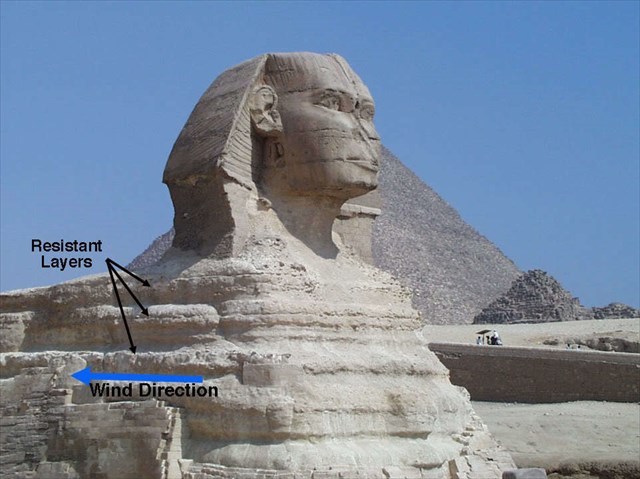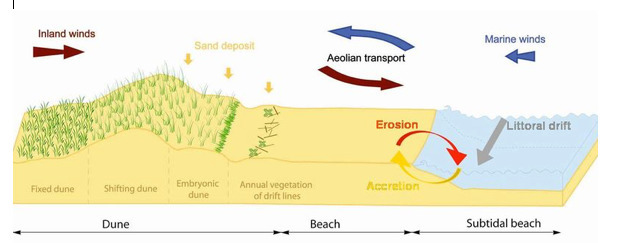Pleasant Beach Dunes EarthCache
-
Difficulty:
-

-
Terrain:
-

Size:  (other)
(other)
Please note Use of geocaching.com services is subject to the terms and conditions
in our disclaimer.
Welcome to Pleasant Beach Dunes
Location:This section of land is part of Pleasant Bay Crown Land Area. The area is part of the Western Prince Edward County Shore that receives continual sedimentary sand deposits from Lake Ontario. This sensitive sand dune area borders and protects Pleasant Bay which is a designated as a Provincially Significant Wetland (PSW). Prince Edward County has two significant provincial parks protecting two other Sand dune ecosites and have left this area for recreational purposes. In 2006, Ontario Parks proposed purchasing and converting this landmass to park territory, however that has yet occur. The area is open to the public every day of the week from dawn till dusk.
What marks this area as geologically significant? This area receives sedimentary sand deposits due to high winds from Lake Ontario. Over a long period of time, sand accumulates and forms mounds. These mounds are known as Dunes. Dunes are shaped by an aeolian process that occurs from wind currents provided by our climate. We know that water erodes areas a lot faster than wind, but in arid (or dry) climate regions, winds function to shape, erode and transport sediment formations. This is the case in Eqypt. After 4,500 years, we see the effects of wind erosion on the Sphinx.

In our case, we see the aeolian process function on a small scale due to our ecozone and the predominant wind currents from Lake Ontario. These effects simply function to shape sand dunes and transport sediment. Unfortunately, one of the downfalls with dunes is the rate at which they can be altered. As you'll see in this area, it is under significant "attack" by relentless ATV use. This can develop landmass blowout's which play a major role in shaping irreplaceable landscapes.

How Does Sediment Accumulation Form Dunes? Through littoral transport, wind shifts from transport to deposition when the energy of the wind drops below that which can sustain the sediment load it is carrying. The sediment load is either suspended in the wind current as suspended load or rolls and bounces along the ground as the saltation load. The most common depositional structure that wind leaves behind is the dune. Typically dunes have a low slope face, called the windward face, that faces the wind direction and a steeper face, called the slip face, which points downwind, as shown below. Dunes move by wind eroding sand from the windward face by pushing it and bouncing the sand along the windward face until it reaches the top of the dune. It is deposited along the slip face, which in effect moves the slip face forward in the direction of the wind, as shown below.
The rate of which sediment can be transported varies, but over time it accumulates and can alter regions drastically if the area is vastly unprotected, such as in a desert. The transport power of wind is deceptive. Although it takes nearly 20 km/hr wind velocity to move significant amounts of sediment, the carrying power of wind rises exponentially as the wind velocity continues to increase, as shown below. Another way of demonstrating the transport ability of the wind is the fact that a cubic kilometer of wind in a dust storm can move up to 1000 tons of fine grained sediment. In late November of 1933 a wind storm struck Oklahoma with such force that it carried dust as far as New England and turned the snow in the Midwest and New England brown.
Types of dunes: There are many types of dune formations and several are found in Ontario. At GZ you will observe one of the following formations. There are four major types of dunes. Barchan dunes are crescent-shaped dunes that are concave downwind, as shown below. Barchan dunes form in places where there is limited sand and a constant wind direction. The parabolic dune is a crescent shaped dune that is concave upwind and forms in areas in which there is some vegetation and a good supply of sand. The longitudinal dune is a linear dune that is parallel to the direction of the wind and forms in areas in which the wind direction is not constant and the supply of sand is moderate to good. Longitudinal dunes can be kilometers in length, and the formation of them is not entirely understood. They are formed in areas in which there is a desert pavement and variable winds. Transverse dunes are linear dunes that are perpendicular to the direction of the wind and are not as long as longitudinal dunes. Transverse dunes form in areas with abundant sand and little vegetation.

Finally: This area does receive a lot of other recreational activities, so please be cautious and respectful when out there, even during hunting season. Happy Caching.
To Log This Earthcache, Please email us with the answers to the following questions:
1- Include with your log, a photo that clearly demonstrates that you visited this Earthcache. You do not have to be in the photo as per policies. However, including a picture of the area, although optional, is the best way to display your visit.
2- Based from the above figure, identify what type of dunes are present at this Earthcache site? While looking around, feel free to dip your toes in the water. Your furry friends may already be in the water by this point! Also, please be cautious out there.
3- Are there signs of blowouts along the beach? If so, describe the size in meters and tell us if they benefit the landscape.
4- Researchers are acknowledging more and more storms to be a direct result of global warming and as such, bringing bigger and stronger storms to Ontario. With winds and storms on the increase, what might come of this significant area? What might happen to the sand dunes? Could you expect a disappearance, erosion or more sediment accumulation?
5- Bring a pocket wind meter, or visit the provided links and identify the wind speed while you were at ground zero. Based from your result, what is the rate of sediment movement for the day? Do you think it will lead to a drastic shift in this ecosite?

Link for weather / wind of Bloomfield from the weather network
Great lakes wind levels from NOAA; http://www.crh.noaa.gov/greatlakes/?c=tmp&l=lo&p=a

Additional Hints
(No hints available.)